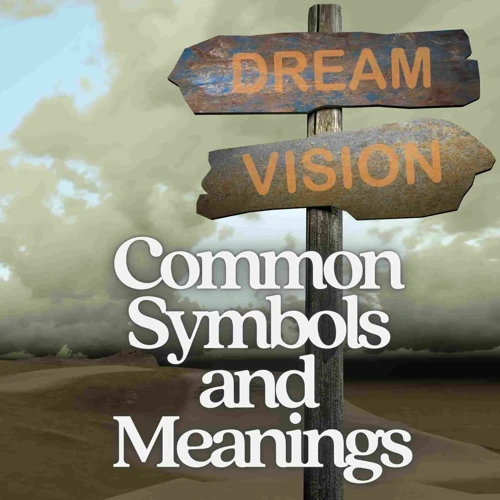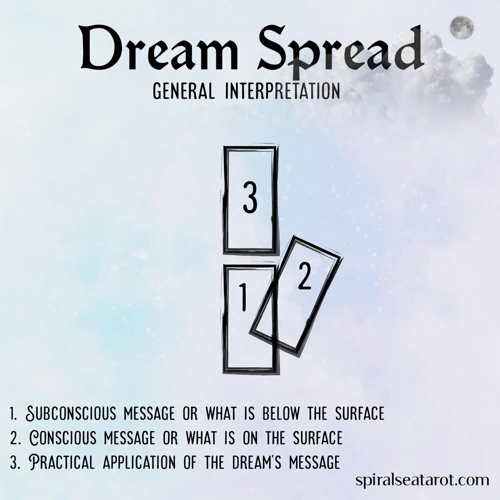Understanding Lucid Dreams

Lucid dreams are vivid and immersive dreams in which the dreamer is aware they are dreaming. Unlike regular dreams where we often passively observe events, lucid dreams allow us to actively participate and even manipulate the dream environment. This heightened state of awareness during sleep opens up a world of infinite possibilities where we can explore our deepest desires, confront our fears, and tap into our creative potential. Lucid dreaming is a skill that can be developed through various techniques and practices, enabling individuals to have intentional control over their dream experiences.
What are Lucid Dreams?
Exploring the Benefits of Lucid Dreaming
- Self-Exploration and Personal Growth: Lucid dreaming offers a unique opportunity for self-exploration and personal growth. By engaging in lucid dreams, individuals can delve into their subconscious mind, uncovering hidden beliefs, desires, and emotions. It allows for introspection and self-reflection, leading to a deeper understanding of oneself.
- Creative Inspiration: Lucid dreams can be a wellspring of creative inspiration. Artists, writers, and musicians often find that their lucid dreams provide them with innovative ideas and concepts that they can incorporate into their creative works. The dream world becomes a canvas for imagination and experimentation.
- Overcoming Fears and Nightmares: For those who experience recurrent nightmares or struggle with specific fears, lucid dreaming can be a powerful tool for overcoming these challenges. By recognizing that they are in a dream, individuals can face their fears head-on and actively change the dream scenario to eliminate or transform threatening elements.
- Enhancing Problem-Solving Abilities: Lucid dreaming has been linked to improved problem-solving abilities. During a lucid dream, the dreamer can consciously focus on a specific problem or question they need assistance with. The dream state provides a unique perspective and access to subconscious knowledge, potentially leading to creative solutions and insights.
- Enhanced Sleep Quality and Lucid Dream Recall: Engaging in lucid dreaming practices can also lead to enhanced sleep quality and better dream recall. Regular dream journaling and reality checks, which will be discussed later in this article, can improve dream recall and overall sleep awareness.
Common Symbols in Lucid Dreams

1. Flying: Flying in a dream often represents a sense of freedom, liberation, and the ability to rise above challenges or limitations.
2. Falling: Falling in a dream can symbolize a loss of control, fear of failure, or a need to let go of something that is no longer serving us.
3. Water: Water is a powerful symbol in dreams and can represent various emotions, purification, and the unconscious mind. The specific context and characteristics of the water in the dream can provide further clues to its meaning.
4. Animals: Animals in dreams can symbolize different aspects of our psyche or specific qualities and characteristics associated with the animal. For example, a wolf may represent our primal instincts, while a bird may symbolize freedom and spirituality.
5. Teeth: Dreams about teeth can relate to our self-image, communication, and personal power. The condition of the teeth, such as being broken or falling out, can indicate underlying anxieties or insecurities.
6. Death or Dying: Dreams involving death or dying often represent change, transformation, and the ending of a particular phase or aspect of our lives. These dreams can also symbolize the need for personal growth and a letting go of the past.
7. Nakedness: Being naked in a dream can reflect feelings of vulnerability, authenticity, or a fear of being exposed for who we truly are.
Understanding these common symbols in lucid dreams can help us decode the underlying messages and gain a deeper understanding of ourselves. For more in-depth analysis of dream symbols, refer to our article on decoding lucid dream symbols.
Symbol: Flying
Symbol: Falling
Potential meanings of the symbol “falling” in a lucid dream:
1. Fear of Failure or Loss: Falling may represent feelings of insecurity or anxiety about a specific situation in your waking life. It could symbolize a fear of failure, a loss of control, or a perceived decline in status.
2. Loss of Control: Falling can be a manifestation of a lack of control in your life. It may suggest that you are feeling overwhelmed or powerless in certain aspects of your waking life.
3. Transition or Change: Falling can also be seen as a symbol of transition or change. It could indicate a period of personal transformation, where you may be letting go of old patterns or beliefs to embrace new experiences.
4. Inner Exploration: Falling in a dream can sometimes be associated with introspection and self-reflection. It may be an invitation to explore your subconscious mind and confront deep-seated emotions or unresolved issues.
5. Letting Go: Falling could symbolize the need to let go of control or certain attachments that no longer serve you. It may be a reminder to surrender and trust in the process of life.
It is important to remember that dream symbols are highly personal and can vary in meaning for different individuals. To fully understand the significance of the falling symbol in your lucid dreams, it is essential to consider your own emotions, experiences, and the specific context of the dream itself.
Symbol: Water
Symbol: Animals
Symbol: Teeth
Teeth are a common symbol that often appears in lucid dreams and can carry significant meaning. The state and condition of the teeth in a dream can provide insights into the dreamer’s overall sense of power and confidence. For example, dreaming of strong, healthy teeth may signify feelings of strength and self-assurance, while dreaming of loose or crumbling teeth could indicate a sense of vulnerability or powerlessness. Additionally, the act of losing teeth in a dream may represent a fear of losing control or the need to let go of something in waking life. On the other hand, dreams of growing new teeth can symbolize personal growth and transformation. It’s important to consider the emotions and associations that arise when interpreting this symbol, as they can provide further insights into its meaning. Understanding the symbolism of teeth in lucid dreams can offer valuable guidance for personal development and self-reflection.
Symbol: Death or Dying
Symbol: Nakedness
In lucid dreams, the symbol of nakedness often represents vulnerability and a sense of exposure. Dreaming of being naked can evoke feelings of embarrassment, shame, or a fear of being judged by others. It may indicate a lack of confidence or a fear of revealing our true selves to others. However, it’s important to note that the symbol of nakedness can also have positive connotations. It can symbolize a desire for authenticity and a willingness to be vulnerable and open. Nakedness in a dream can also signify a need for acceptance and the desire to be seen and understood for who we truly are. The interpretation of this symbol largely depends on the individual’s personal associations and emotions surrounding nudity. It is essential to explore the context of the dream and the emotions experienced during the dream to gain a deeper understanding of its meaning. By reflecting on the feelings and emotions evoked by the symbol of nakedness, we can uncover valuable insights into our vulnerabilities and desires for acceptance.
Interpreting the Meanings of Lucid Dream Symbols

Using Personal Associations and Emotions
When exploring the meanings of lucid dream symbols, one valuable approach is to tap into our personal associations and emotions. Each symbol in a dream can hold different meanings for different individuals based on their unique experiences and memories. Reflect on how a specific symbol made you feel during the dream and consider any personal connections or memories it may have triggered. For example, if you dream of flying and it fills you with a sense of freedom and exhilaration, it could indicate a desire for liberation or escaping limitations in your waking life. Alternatively, if flying evokes feelings of anxiety or fear, it might suggest a fear of taking risks or a fear of losing control. By delving deep into your emotions and personal associations, you can unravel the layers of meaning behind the symbols in your lucid dreams.
Considering Cultural and Archetypal Symbolism
Considering cultural and archetypal symbolism in the interpretation of lucid dream symbols can provide additional layers of meaning and depth. Cultural symbolism refers to the symbols and meanings that are specific to a particular culture or society. For example, the snake is a symbol of transformation and rebirth in many Native American cultures, while in Western culture, it may represent deceit or danger. Understanding the cultural context can offer valuable insights into the interpretation of dream symbols.
Similarly, archetypal symbolism refers to symbols that are universally recognized and have a collective meaning across cultures and time. These symbols are deeply rooted in the collective unconscious, as described by psychologist Carl Jung. Archetypal symbols, such as the mother, the hero, or the trickster, hold a common significance that transcends individual experiences.
When exploring the meaning of lucid dream symbols, it can be helpful to consider both cultural and archetypal symbols. Reflecting on the broader cultural and universal meanings associated with specific symbols can provide a broader perspective and shed light on the symbolic messages of our dreams.
Seeking Professional Guidance
Tips for Enhancing Lucid Dream Symbol Exploration
Maintaining a Dream Journal
Engaging in Reality Checks
Engaging in reality checks is a crucial aspect of enhancing and maximizing the exploration of lucid dream symbols. Reality checks are techniques used during waking life to determine whether one is dreaming or in the waking state. By regularly performing reality checks throughout the day, individuals can train their minds to question reality and carry this habit into their dreams. Common reality checks include examining the hands for any abnormalities, attempting to push a finger through the palm of the opposite hand, or trying to read a passage of text multiple times to see if it changes. By making reality checks a regular practice, individuals can increase their chances of recognizing when they are in a dream and becoming lucid. Once lucid, dreamers can then intentionally explore and interact with the dream symbols present, gaining insights and potentially influencing the course of the dream. It’s important to note that each person may have different reality checks that work best for them, so it’s essential to find techniques that resonate personally.
Practicing Meditation and Visualization
Visualization, on the other hand, involves intentionally creating mental images or scenarios. By visualizing specific symbols or scenes before bed, you can increase the likelihood of encountering them in your dreams. For example, if you want to explore the symbol of flying, you can close your eyes and vividly imagine yourself soaring through the sky, feeling the wind against your face and the exhilaration of freedom. This visualization exercise helps to reinforce the symbol in your subconscious mind, making it more likely to appear in your dreams.
In addition to meditation and visualization, there are other techniques that can complement the practice of exploring lucid dream symbols. Reality checks, such as asking yourself if you are dreaming throughout the day, can create a habit of questioning reality. This habit can then carry over into your dreams, increasing the chances of becoming lucid. Keeping a dream journal by your bedside and recording your dreams immediately upon waking can also improve dream recall and provide valuable insights into recurring symbols or themes.
By incorporating meditation, visualization, and other techniques into your daily routine, you can enhance your ability to explore and interpret the meanings of lucid dream symbols. Remember that each individual’s dream experience is unique, so it’s important to pay attention to your own personal associations and emotions connected to the symbols you encounter. Happy dreaming!
Conclusion
In conclusion, exploring the common symbols in lucid dreams can provide valuable insights into our subconscious mind and help us better understand ourselves. By deciphering the meanings behind these symbols, we can gain self-awareness, uncover hidden emotions, and even receive guidance for our waking lives. It is important to remember that the interpretation of symbols in lucid dreams is highly personal and can vary from individual to individual. Using personal associations and emotions, considering cultural and archetypal symbolism, and seeking professional guidance, if needed, are all valid approaches to interpreting these symbols. As we continue to explore and deepen our understanding of lucid dream symbols, we can enhance our dream experiences and embark on a journey of self-discovery like no other.
Frequently Asked Questions
What is the scientific explanation of lucid dreaming?
Scientists believe that lucid dreaming occurs during rapid eye movement (REM) sleep when there is increased brain activity. It is believed to involve a combination of factors, including heightened self-awareness and activation of the prefrontal cortex, the part of the brain responsible for logical thinking and decision-making.
Can anyone learn to have lucid dreams?
While some individuals naturally experience lucid dreams more frequently, with practice and training, most people can learn to have lucid dreams. Various techniques, such as reality checks, dream journaling, and meditation, can help increase the likelihood of having lucid dreams.
What are reality checks, and how do they help with lucid dreaming?
Reality checks involve performing simple tests or actions throughout the day to determine whether one is dreaming or awake. By regularly practicing reality checks and questioning one’s reality, individuals can train their minds to perform the same checks in their dreams, thus helping to trigger lucidity.
Are there any potential risks or side effects associated with lucid dreaming?
Lucid dreaming is generally considered safe and beneficial. However, some individuals may experience sleep disturbances or become disoriented upon waking up from a lucid dream. It’s important to maintain a healthy sleep routine and consult a healthcare professional if any adverse effects persist.
What is dream journaling, and why is it helpful for exploring lucid dream symbols?
Dream journaling involves recording dreams in a journal immediately upon waking up. This practice helps improve dream recall and allows individuals to analyze recurring themes, symbols, and emotions that may arise in their dreams, leading to a deeper understanding of the personal significance behind them.
How can meditation and visualization aid in lucid dreaming?
Meditation and visualization techniques can help calm the mind, improve focus, and increase self-awareness, all of which are beneficial for lucid dreaming. Regular practice of meditation and visualization can enhance one’s ability to enter a lucid dream state and maintain lucidity throughout the dream.
What role do personal associations and emotions play in interpreting dream symbols?
Personal associations and emotions are crucial elements in interpreting dream symbols. Different symbols may have unique meanings for each individual based on their personal experiences, beliefs, and emotions attached to those symbols. Analyzing these associations can provide valuable insights into the messages conveyed by dream symbols.
How can cultural and archetypal symbolism be relevant in understanding dream symbols?
Cultural and archetypal symbols carry collective meanings and experiences shared by a particular culture or society. Exploring the cultural and archetypal symbolism of dream symbols can help individuals understand the broader social and psychological significance of their dreams, transcending personal interpretations.
What are some practical steps for enhancing lucid dream exploration?
Maintaining a dream journal, performing reality checks throughout the day, and practicing meditation and visualization are practical steps for enhancing lucid dream exploration. These techniques promote self-awareness, dream recall, and the development of skills needed to recognize and interpret dream symbols.
When should someone seek professional guidance for their lucid dream experiences?
If someone is experiencing distressing or recurring nightmares, experiencing sleep disruptions, or if they have any concerns about their mental or physical well-being related to their lucid dream experiences, it is advisable to seek professional guidance from a qualified therapist or sleep specialist.








